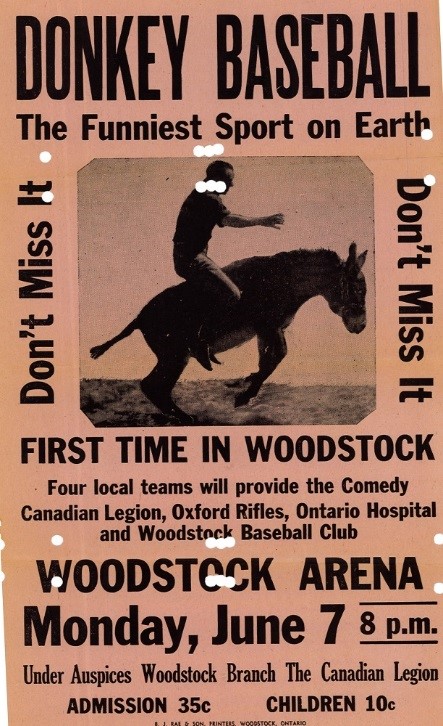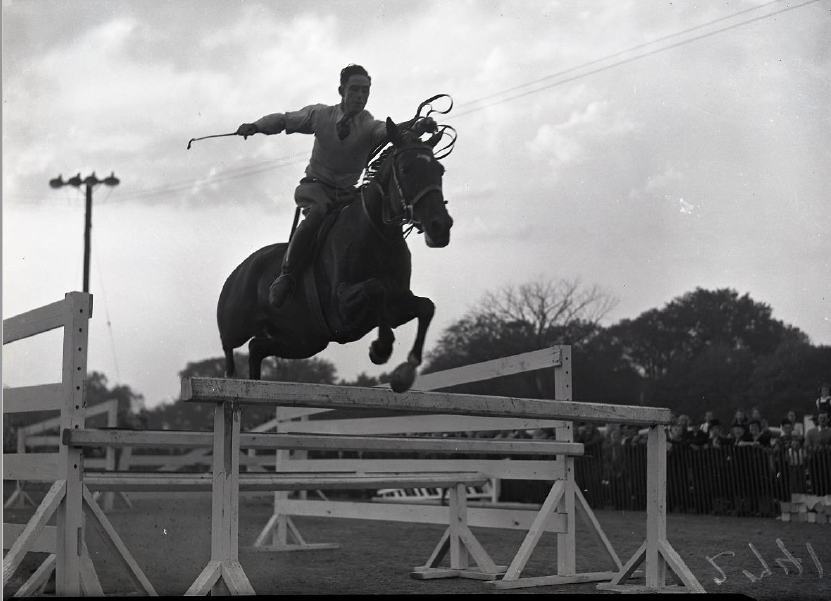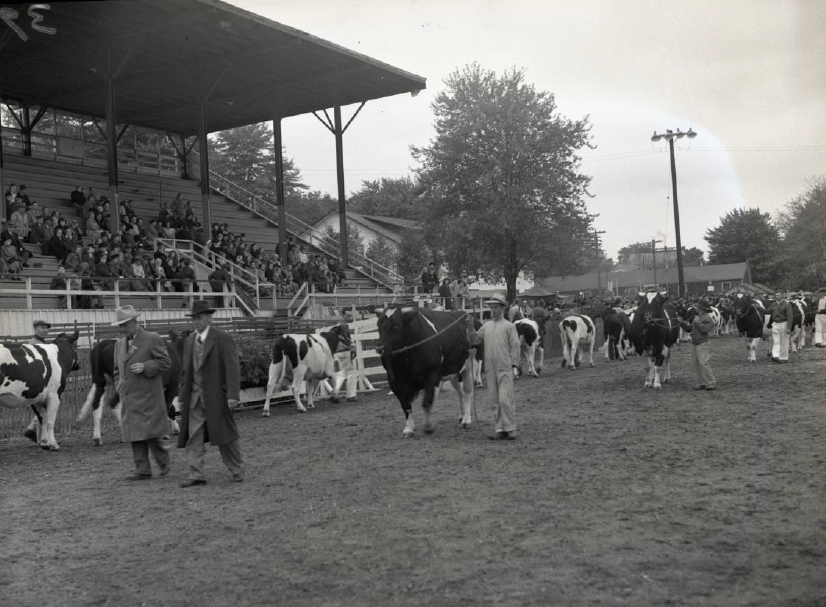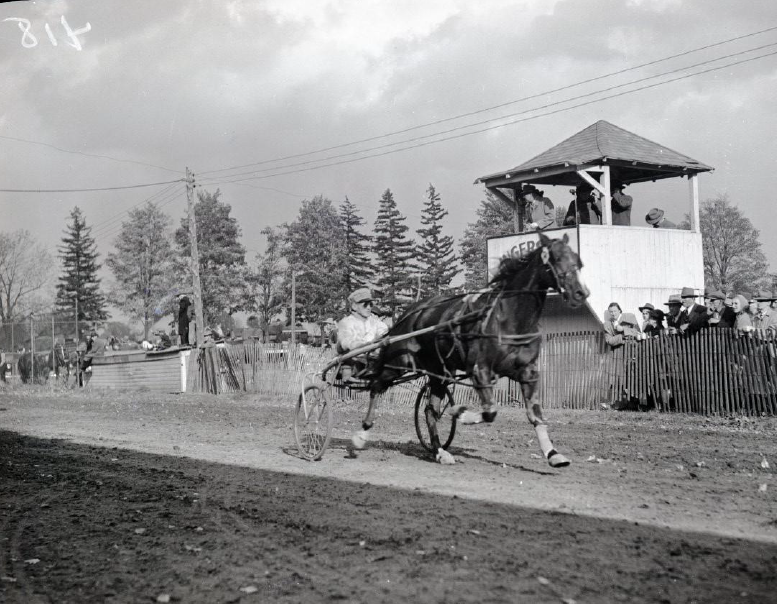For Better or Worse: Animals in Entertainment
Donkey Baseball
Humans have been using animals for entertainment purposes for many years, often and unfortunately, at the expense of the animals being used. There are examples of this in our archival records, including a “donkey baseball” poster and photographs. Historically, donkey baseball seems to have been more of a spectacle than an actual competitive sport. The “sport” was basically a form of baseball but with players riding donkeys; the rules were altered from regular baseball.

Donkey baseball achieved popularity during the Great Depression era in the 1930s. The addition of donkeys was a way to add entertainment value and a level of difficulty for the players, as the donkeys were known to be uncooperative. The sport likely led to many of the players being injured, and likely some of the donkeys too. Donkey sanctuaries exist today that take in retired donkeys from the sport, which still takes place in some locations in North America. Donkey baseball was described as the “funniest sport on earth” in a poster from 1936. Admission to the event was 35 cents for adults and only 10 cents for children.
Competitions and Shows
Animals and their owners have also been a part of competitive events for many years. Anyone who has attended a fall fair will be familiar with the horse shows, plowing matches, and other livestock and pet shows that are part of the fair’s entertainment. One type of animal-related competition that has become quite a sensation is the dog show. Dog shows take place all over the world, and Ontario is no exception. Oxford County had its own kennel club for many years before merging with Perth County’s Wildwood Kennel Club in 2022. There is also a Woodstock & District Canine Association. These clubs and associations take part in annual dog shows. The Oxford County Warden once had a special trophy that would be awarded to the “Best in Show” dog in the Oxford County Kennel Club. The trophy appears to have been awarded to ten dogs from 2001 to 2010. The trophy is currently part of the Oxford County Archives’ holdings.
The Circus Comes to Town
Due to evidence and witness accounts being revealed about the abuse and mistreatment of animals in circuses, many circus companies no longer use animals in their acts. Historically, animals were a big part of many circus attractions. Oxford County, and Woodstock specifically, were stops for traveling circuses several times.
From the late 19th century through the first half of the 20th century, traveling circuses were a major form of spectator entertainment in the United States and Canada and attracted huge attention when they arrived in a city. In September 1884, the Great Forepaugh Show arrived in Woodstock, Ontario drawing an impressively large crowd of people wanting to see the “wonders” of the circus.
Adam Forepaugh’s circus rose in prominence in the mid-1800s and was considered a rival to the famous P.T. Barnum. Forepaugh’s largest draw was the “Light of Asia”, a regular gray elephant he painted white and marketed as a genuine white elephant in order to compete with Barnum’s so-called “cheap imitation” (his white elephant was actually pink). Although the elephant was advertised to appear in Woodstock, it was surprisingly absent. Instead, spectators were greeted with a number of wild animals, never before seen in Canada, including the mandrill, which was advertised as the only living specimen of the gorilla in captivity (the mandrill is not, in fact, a gorilla but a species of monkey). Lions, tigers, dogs, monkeys, and horses were also included in the show. In the ring, snake charmers performed, trapeze artists soared through the air, acrobats formed a human pyramid, and a herd of trained elephants played the trombone, xylophone, cymbal, drum, and organ. “Clown elephants” also performed.
Following the event, the “Woodstock Sentinel-Review” newspaper claimed that Forepaugh’s circus was one of the best that had been seen in the city and that “Woodstock kept up its reputation for being one of the best circus towns in Canada”. Forepaugh’s Circus would continue to operate until 1889 when Adam Forepaugh sold his circus acts to James Anthony Bailey and James E. Cooper and sold his railroad cars to the Ringling Brothers.
The Ringling Brothers Circus was another spectacle that amazed the people of Woodstock. In 1901, the circus arrived in Woodstock with a parade that was said to be two miles long and included hundreds of richly-adorned horses and riders, dens and cages of rare wild animals, acrobats, elephants, and other wonders. Once they arrived at the exhibition site, they would perform two public performances at 2 p.m. and 8 p.m. Over the next decade, the circus would make numerous stops in the city with bigger and better attractions. On June 9, 1914, the circus once again returned to Woodstock with eighty-nine rail cars filled with clowns, elephant actors, dancing girls, and other arena-type artists.






